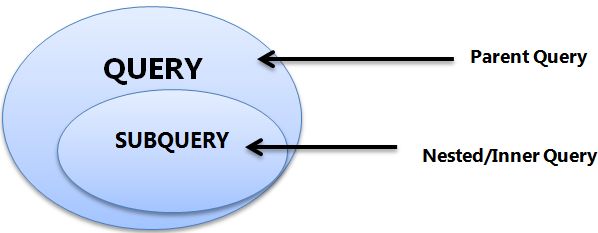

- Sqlite inner join on subquery how to#
- Sqlite inner join on subquery update#
- Sqlite inner join on subquery full#
- Sqlite inner join on subquery iso#
- Sqlite inner join on subquery plus#
When ID=1 exists, the ROLE will be unaffected. INSERT OR REPLACE INTO Employee (id, role, name) When ID=1 does not exist, the name will be the default (NULL). When ID=1 exists, the NAME will be unaffected.
Sqlite inner join on subquery update#
GOOD but tedious: This will update 2 of the columns. UPSERT in SQLite follows the syntax established by PostgreSQL. UPSERT is a special syntax addition to INSERT that causes the INSERT to behave as an UPDATE or a no-op if the INSERT would violate a uniqueness constraint. UPSERT support in SQLite! UPSERT syntax was added to SQLite with version 3.24.0! the NAME column will be set to NULL or the default value: INSERT OR REPLACE INTO Employee (id, role)
Sqlite inner join on subquery full#
select * from a FULL OUTER JOIN b on a.a = b.b Īssuming three columns in the table: ID, NAME, ROLEīAD: This will insert or replace all columns with new values for ID=1: INSERT OR REPLACE INTO Employee (id, name, role)īAD: This will insert or replace 2 of the columns. If something in A doesn't have a corresponding datum in B, then the B portion is null, and vice versa. Select a.*, b.* from a,b where a.a(+) = b.b Ī full outer join will give you the union of A and B, i.e. Correlated subqueries break down when the foreign key isnt indexed, because each subquery will require a full table scan.

select * from a RIGHT OUTER JOIN b on a.a = b.b
Sqlite inner join on subquery plus#
Select a.*, b.* from a,b where a.a = b.b(+) Ī right outer join will give all rows in B, plus any common rows in A. select * from a LEFT OUTER JOIN b on a.a = b.b Select a.*, b.* from a,b where a.a = b.b Ī left outer join will give all rows in A, plus any common rows in B. select * from a INNER JOIN b on a.a = b.b Note that (1,2) are unique to A, (3,4) are common, and (5,6) are unique to B.Īn inner join using either of the equivalent queries gives the intersection of the two tables, i.e. Suppose you have two tables, with a single column each, and data as follows: A B the inner part of a Venn diagram intersection.Īn outer join of A and B gives the results of A union B, i.e. The subquery executes in no time on SQLite also, so it seems to be the join that causes the slow.Īssuming you're joining on columns with no duplicates, which is a very common case:Īn inner join of A and B gives the result of A intersect B, i.e.

On the SQLite, I tried with only the primary key, but then added on several other columns to no avail. Other than this query, SQLite has done everything I have asked of it.Īs far as indexes go, on SqlServer, I only have the primary key indexed. Otherwise, I'm going to have to find another embedded db to use.
Sqlite inner join on subquery how to#
Summary.DateApplies = newStatHistory.DateAppliesĬampusID = BY NewStatHistory.DateApplies DESCĪnybody have any ideas about how to get it to work. Summary.statID = newStatHistory.statID AND ON summary.entered = newstathistory.dateEntered AND SELECT MAX(DateEntered) entered, statID, DateApplies This query runs almost instantly in SqlServer but in SQLite it just times out and I can't figure out how to optimize to get it to work. I need to pull the most recently entered value for each "DateApplies". StatHistoryID uniqueidentifier PRIMARY KEY NOT NULL, Structure is like this: CREATE TABLE NewStatHistory ( A subquery cannot contain an ORDER BY clause. A subquery cannot contain a BETWEEN or LIKE clause. Specify only one column or expression in a subquery unless you are using IN, ANY, ALL, or EXISTS. Rules for creating a subquery Enclose the subquery in parentheses. You would have to depend on a method of projection (shown earlier) that does not have such dependencies.I have a table for a Statistical project. Subqueries run from last to first within the main SQL statement in which they appear. Note that if task is only unique within ritm then you would have to use: select *Īnd if r(ritm, task) is not unique then these solution methods will not (and cannot be made) to generate the output you claim to want. It will only ever refer to the inner table t. In the correlated subquery "from t where t.ritm" does not refer to an outer variable.
Sqlite inner join on subquery iso#
If ud is already a datetime value (whether a naive ISO string, or some numeric representation of the datetime, so long as it is consistently defined across all rows) the wrapping the date function around ud does nothing except (a) use CPU time for no useful benefit and (b) create duplicates where none existed. I would like to join these two subqueries along the columns date and symbol. I have two SELECT statements from two tables in the same database. I have two SELECT statements from two tables in the same database. SQLite - joining two subqueries Ask Question Asked 12 years, 7 months ago Modified 9 years, 5 months ago Viewed 31k times 6 Or at least I think they're called subqueries (newbie and self-trained in SQLite). Which has a requirement that the value of task is unique. Or at least I think theyre called subqueries (newbie and self-trained in SQLite). Which is exactly the same as this query: select *


 0 kommentar(er)
0 kommentar(er)
